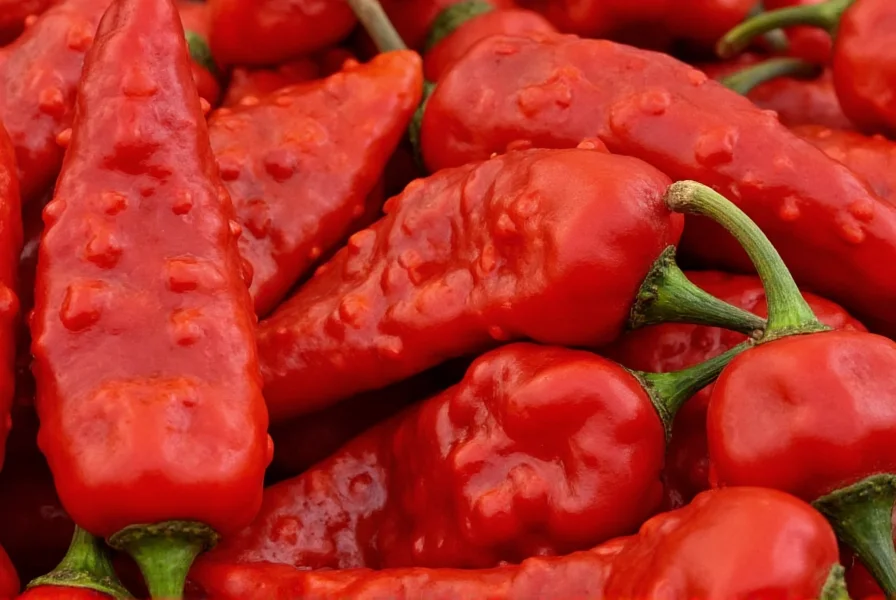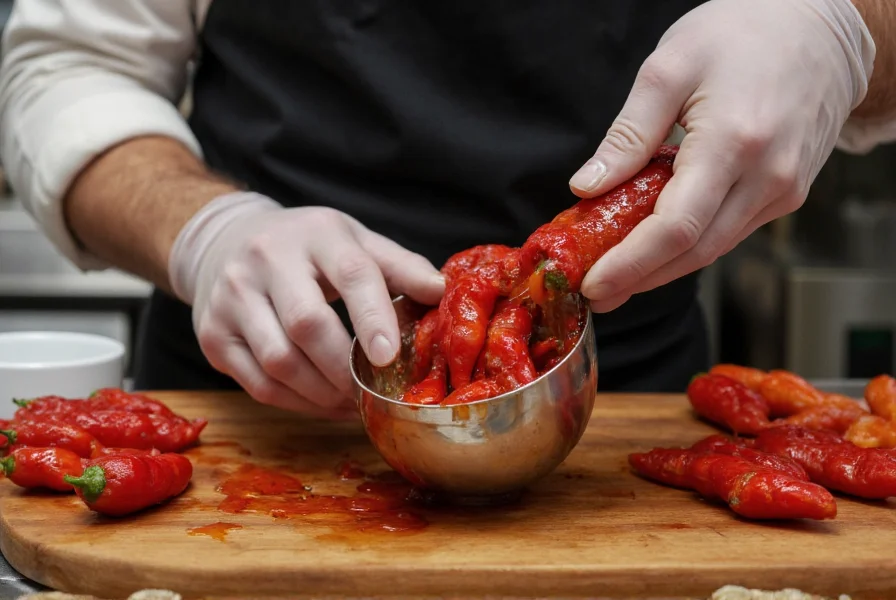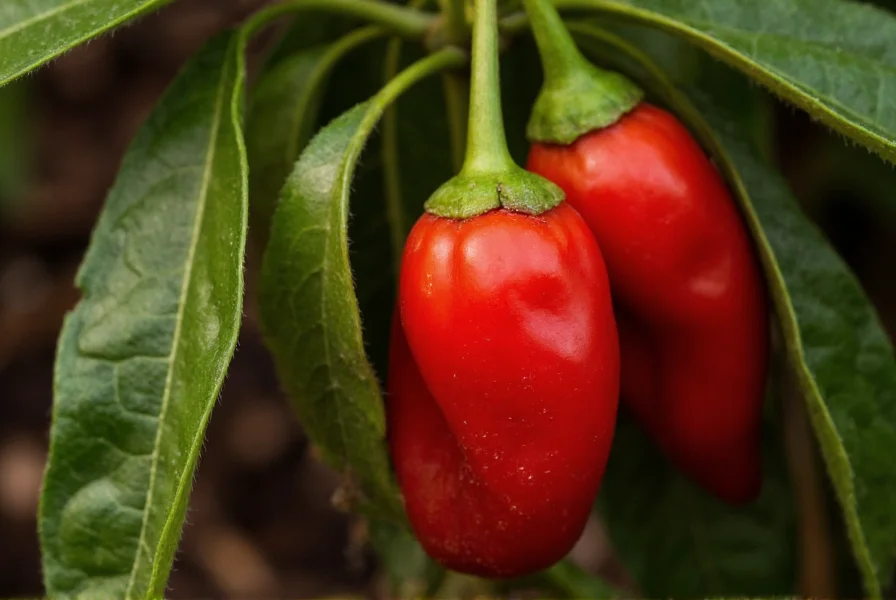Understanding the Reaper Pepper: Clarifying the Terminology
When searching for information about "reaper pepper," many people encounter confusion about whether this refers to a specific variety or if it's simply another name for the Carolina Reaper. The truth is straightforward: "reaper pepper" is commonly used as shorthand for the Carolina Reaper, which holds the official title of world's hottest pepper. No distinct "reaper pepper" variety exists separately from the Carolina Reaper.
This confusion likely stems from how people casually refer to extremely hot peppers. The Carolina Reaper (Capsicum chinense 'HP22B') was specifically bred to maximize heat while maintaining complex flavor notes. Understanding this distinction is crucial for anyone researching how hot is reaper pepper or seeking accurate information about this extreme chili variety.
Heat Level and Scoville Scale Measurements
The Carolina Reaper's legendary status comes from its extraordinary heat level. When discussing reaper pepper scoville units, we're looking at measurements that consistently exceed 1.4 million SHU, with some individual peppers testing as high as 2.2 million SHU. To put this in perspective:
| Pepper Variety | Scoville Heat Units (SHU) | Heat Relative to Jalapeño |
|---|---|---|
| Carolina Reaper | 1,400,000-2,200,000 | 275-580x hotter |
| Trinidad Moruga Scorpion | 1,200,000-2,000,000 | 233-416x hotter |
| Habanero | 100,000-350,000 | 20-70x hotter |
| Jalapeño | 2,500-8,000 | Baseline |
These measurements aren't consistent across every single pepper—environmental factors significantly impact heat levels. The same Carolina Reaper plant might produce peppers ranging from "merely" very hot to record-breaking levels depending on growing conditions.

Physical Characteristics and Flavor Profile
Despite its fearsome reputation for heat, the Carolina Reaper offers more than just pain. Understanding the complete reaper pepper flavor profile reveals why it remains popular among chili enthusiasts:
- Appearance: Typically 1-2 inches long with a distinctive "stinger" tail, bumpy red skin (though yellow and chocolate varieties exist)
- Initial flavor: Surprisingly fruity with notes of caramel and citrus
- Heat progression: Builds gradually over 30-45 seconds, starting with fruitiness before intense heat arrives
- Aftereffects: Long-lasting burn that can persist for 20-45 minutes
This complex flavor development makes the Carolina Reaper valuable to serious hot sauce makers, not just heat seekers. The initial sweetness followed by intense heat creates a unique sensory experience that simpler hot peppers cannot match.
Growing Carolina Reaper Peppers
For gardeners interested in reaper pepper growing conditions, these plants require specific care to reach their maximum potential:
- Climate needs: Thrives in warm temperatures (75-90°F/24-32°C) with high humidity
- Soil requirements: Well-draining, slightly acidic soil (pH 6.0-6.8)
- Growing season: Requires 90-120 days to mature from seed
- Water needs: Consistent moisture without waterlogging
- Special considerations: Benefits from calcium supplementation to prevent blossom end rot
Interestingly, stress conditions can increase capsaicin production. Many growers deliberately introduce mild stressors like temporary water restriction to boost heat levels, though this reduces overall yield. This explains why reaper pepper scoville units can vary so dramatically between plants.
Safe Handling and Culinary Applications
Working with Carolina Reaper peppers demands serious precautions. The question of handling extremely hot peppers safely isn't just theoretical—capsaicin can cause severe irritation to skin and eyes.
Essential safety measures include:
- Wearing nitrile gloves (latex won't protect against capsaicin)
- Using eye protection when cutting or processing
- Working in well-ventilated areas to avoid inhaling capsaicin particles
- Never touching your face during handling
- Having dairy products (milk, yogurt) nearby to neutralize accidental exposure
When considering reaper pepper culinary uses, remember that a little goes an extremely long way. Most recipes call for just a small portion of one pepper. Popular applications include:
- Hot sauces (often diluted with milder peppers)
- Infused oils and vinegars
- Specialty salsas (used in minute quantities)
- Pepper mash for fermentation
- Extreme challenge foods (for experienced consumers only)

Common Misconceptions About Reaper Peppers
Several myths persist about the reaper pepper vs carolina reaper distinction and related topics:
- Myth: There are multiple "reaper" pepper varieties
Fact: Carolina Reaper is the specific cultivar; "reaper" is informal shorthand - Myth: All Carolina Reapers are equally hot
Fact: Heat varies significantly based on growing conditions - Myth: Eating Carolina Reapers is dangerous
Fact: While extremely uncomfortable, they pose no serious health risk to most people in moderate amounts - Myth: The hotter the better for all applications
Fact: Many culinary applications benefit from slightly less stressed plants for better flavor balance
Responsible Consumption Guidelines
While exploring the world of super-hot peppers, follow these responsible consumption practices:
- Start with tiny amounts—less than 1/8 of a pepper
- Always have dairy products available to neutralize capsaicin
- Never consume on an empty stomach
- Avoid if you have gastrointestinal sensitivities
- Don't participate in extreme eating challenges without proper preparation
- Respect your personal heat tolerance limits
Remember that the goal of reaper pepper culinary uses should be flavor enhancement, not just heat punishment. When used thoughtfully, these peppers can add remarkable complexity to dishes.











 浙公网安备
33010002000092号
浙公网安备
33010002000092号 浙B2-20120091-4
浙B2-20120091-4